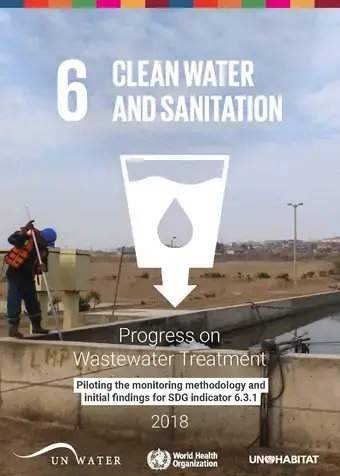
SDG target 6.3 calls for improving ambient water quality by reducing pollution, eliminating dumping and minimizing release of hazardous chemicals and materials, halving the proportion of untreated wastewater and increasing recycling and safe reuse globally.
The indicators used to measure progress are SDG 6.3.1 “proportion of wastewater safely treated” and 6.3.2 “proportion of water bodies with good water quality”. Wastewater treatment is separated by domestic and industrial sources and domestic sources are further disaggregated by wastewater and faecal sludge from both facilities connected to sewers and septic tanks. Domestic wastewater is monitored in coordination with monitoring of indicator 6.2.1 on safely managed sanitation that also estimates containment, emptying, transport and treatment of wastewater and faecal sludge. Wastewater from economic activities is monitored by UN-Habitat and ambient water quality by UNEP GEMS-Water initiative.
The 2018 report on progress of wastewater treatment presents the monitoring methodology and preliminary estimates for domestic wastewater for 79 mostly high- and middle-income countries. The report also includes supplementary data on safe use of wastewater. Separate files can be downloaded for each country showing data sources, methods and assumptions applied to generate estimates.
The SDG 6.3.1 indicator report on “proportion of wastewater safely treated” describes the monitoring methodology developed and tested in consultation with wastewater experts, national sector experts and statistical authorities and harmonized with the International Recommendations for Water Statistics and established regional monitoring mechanisms.
The report also presents preliminary estimates for domestic wastewater for 79 mostly high- and middle-income countries and includes supplementary data on safe use of wastewater. Separate files can be downloaded for each country showing data sources, methods and assumptions applied to generate estimates.